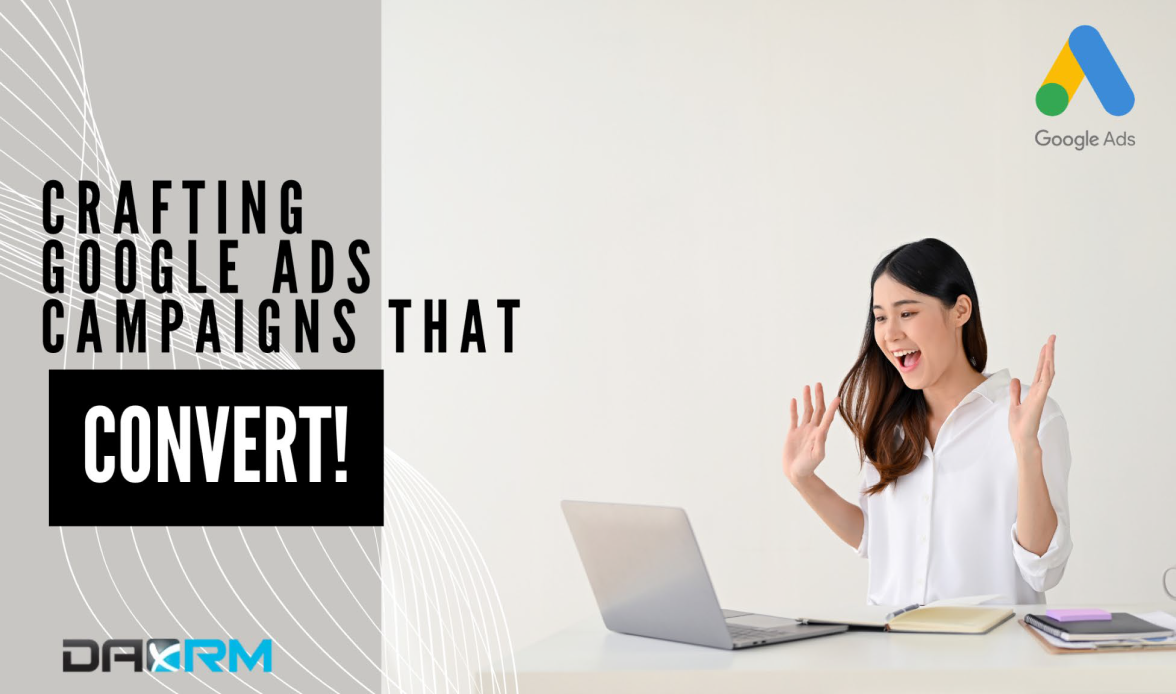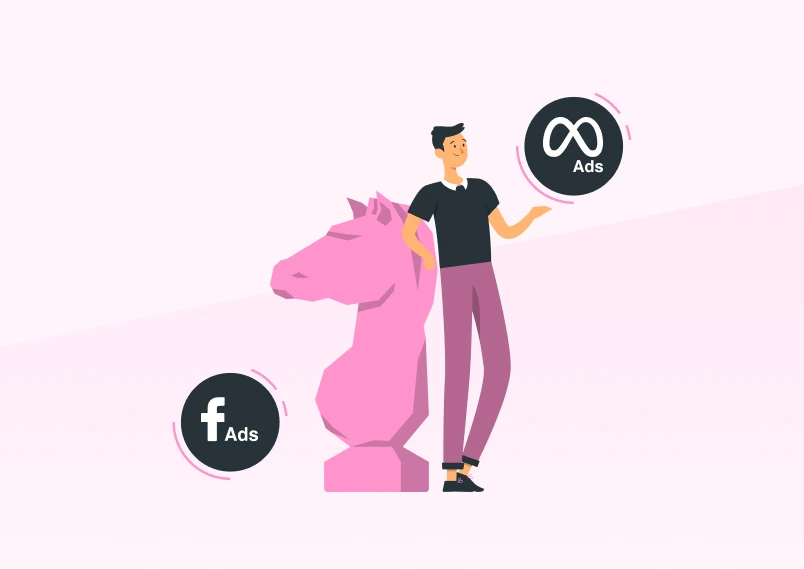Table of Contents
- Google Ads Campaign Creation
- Tactical Actions for Higher Conversion
- 1. Define Clear Objectives
- 2. Know Your Audience
- 3. Conduct Thorough Keyword Research
- 4. Build High-Converting Landing Pages
- 5. Set a Realistic Budget
- 6. Monitor and Optimize
- Conversion Boost: Unbreakable Tips from Experts
- The Path Forward: Beyond Conversions
Did you know that the average conversion rate for Google Ads across all industries is a mere 4.40%? While clicks are important, they're only valuable if they translate into tangible results. For digital marketing agencies and freelance SEO strategists, the pressure to deliver ROI for clients is immense. So how do you create Google Ads campaigns that don't just attract clicks but also drive conversions?

In this blog post: We'll go beyond the basics, providing a tactical guide to creating, optimizing, and enhancing your Google Ads campaigns. You'll gain a fresh perspective on the step-by-step campaign creation process and learn optimization tips coming from experts in the digital marketing space. Our ultimate goal? To skyrocket your clients' conversion rates by transforming clicks into tangible results. So, let's jump right in!
Google Ads Campaign Creation
Tactical Actions for Higher Conversion
Below, we've outlined the essential steps to build campaigns that truly deliver, all while leveraging the power of your CRM to gain deeper insights and refine your strategy.
1. Define Clear Objectives
Before anything else, outline your campaign goals. Your objectives will dictate your campaign structure and the metrics you'll track.
- Goal Clarity: Precisely define what you want to achieve. Is it brand awareness, lead generation, or driving online sales?
- Structure & Metrics: Your goals will shape your campaign's structure and the key performance indicators (KPIs) you'll track.
- Client Communication: Clear objectives and correct KPIs streamline how you report progress to your clients. Demonstrate the campaign's impact on their business goals.
2. Know Your Audience
Have you prepared your ideal customer personas? What are your prospects’ demographics, interests, and online behavior? Move beyond surface-level assumptions about your ideal customer. Dive deep into their world. Here's where your CRM becomes invaluable:
- Persona Perfection: Craft detailed customer personas that go beyond demographics. Understand their pain points, motivations, and online behavior.
- CRM as Your Guide: Leverage your CRM's rich customer data to uncover hidden insights about your target audience.
- Laser-Focused Targeting: Use this knowledge to inform both your keyword research and ad targeting strategies.
- Right Message, Right Time: Ensure your ads reach the right people at the right moment in their buyer journey.
3. Conduct Thorough Keyword Research
While your client may have an existing keyword list, it's crucial to approach keyword research with a fresh perspective. Don't blindly trust what's been done before. Start fresh and you'll likely uncover valuable search terms that were previously overlooked.
- Audience-Centric Approach: Start from scratch to uncover hidden gems. Understand your target audience's language and search behavior.
- High-Intent Keywords: Focus on keywords that indicate a strong likelihood of conversion. Think "buy now," "free trial," or specific product names.
- Utilize Digital Power-Tools: Leverage tools like Google Keyword Planner and SEMrush to unearth relevant keywords and their search volumes.
- Mine Your CRM: Tap into the wealth of data within your CRM. Uncover the language your existing customers use, revealing insights into their needs and preferences.
4. Build High-Converting Landing Pages
Remember, your ad's success depends on the page it directs users to. A high-converting landing page is essential to capitalize on the interest generated by your ad. To achieve this, consider these key elements:
- Relevance: Ensure the landing page content aligns seamlessly with your ad's message and the user's search intent.
- Clear Call to Action: Prominently feature a compelling call to action that guides users towards the desired conversion, whether it's making a purchase, signing up for a newsletter, or requesting a demo.
- User-Friendly Experience: Optimize the landing page for speed, mobile responsiveness, and intuitive navigation.
- CRM Integration: Connect your landing page’s analytics with your CRM to capture valuable lead data and initiate personalized retargeting campaigns for specific customer segments.
5. Set a Realistic Budget
Determine your daily or monthly ad spend based on your goals and industry benchmarks. Google Ads allows for flexibility, so you can adjust your budget as you go. Remember, setting is about aligning your financial resources with your campaign aspirations. It requires a strategic balance:
- Goal-Oriented Budgeting: Let your campaign goals guide your budget. Ambitious goals often require more investment.
- Industry Insights: Research industry benchmarks to understand typical ad spends and cost-per-click (CPC) ranges.
- Flexibility is Key: Google Ads offers the flexibility to adjust your budget as you gain insights into campaign performance.
- CRM Tracking: Monitor your ad spend meticulously within your CRM for accurate reporting and budget optimization.
- Rule of Thumb: Generally, start with a modest budget and gradually increase it based on performance data. Don't overspend initially; let data inform your decisions.
6. Monitor and Optimize
Launching your campaign is just the beginning. Continuous monitoring and optimization are key to maximizing results.
- Data-Driven Decisions: Regularly review campaign performance metrics. Track CTRs, conversion rates, and CPA to identify areas for improvement.
- CRM Integration: Connect your Google Ads data with your CRM for a comprehensive view of campaign performance and its influence on lead generation and sales.
- Iterate and Improve: Use these insights to make informed adjustments to your bids, ad copy, targeting, and landing pages.
- Stay Agile: The digital landscape is constantly evolving. Be prepared to adapt your campaigns based on performance data and emerging trends.
Conversion Boost: Unbreakable Tips from Experts
The following tips, coming from the best in the field, are proven to take conversion rates through the roof.
- Leverage Ad Extensions: Implement sitelink extensions, call extensions, and location extensions to enhance your ad's visibility and provide additional information to users.
- Target the Right Devices: Analyze device performance and tailor your bids and ad copy accordingly. Mobile users may require a different approach than desktop users.
- Experiment with Ad Scheduling: Analyze peak performance times and adjust your ad schedule to maximize visibility during those hours.
- Utilize Remarketing: Re-engage users who have previously interacted with your website or ads with tailored messaging and offers. CRM data can provide valuable insights for creating highly targeted remarketing campaigns.
- Embrace A/B Testing: Test different ad variations, landing pages, and calls to action to identify what resonates most with your audience. Your CRM can help you track the results of these tests and optimize your campaigns based on real-world data.
- Employ Negative Keywords: Exclude irrelevant search terms to refine your targeting and improve ad relevance.
- Harness the Power of Ad Groups: Organize your campaigns into tightly themed ad groups with relevant keywords and ad copy to improve quality scores and lower costs.
The Path Forward: Beyond Conversions
Mastering Google Ads is not a destination, but a journey of continuous improvement. The strategies and tactics we've explored today lay a solid foundation for crafting campaigns that convert. But the true power of Google Ads lies in its ability to evolve alongside your clients' needs and the ever-changing digital landscape. As you implement these strategies, remember:
- Data is your compass: Leverage the wealth of information within your CRM and Google Ads to make informed decisions and drive optimization.
- Experimentation is key: Don't be afraid to test new approaches, ad formats, and targeting strategies to uncover hidden opportunities.
- Client collaboration is essential: Maintain open communication with your clients, ensuring their goals and expectations are aligned with your campaign strategies.
By adopting a proactive, data-driven approach, you'll not only achieve exceptional results for your clients but also position your agency as a strategic partner in their growth.

